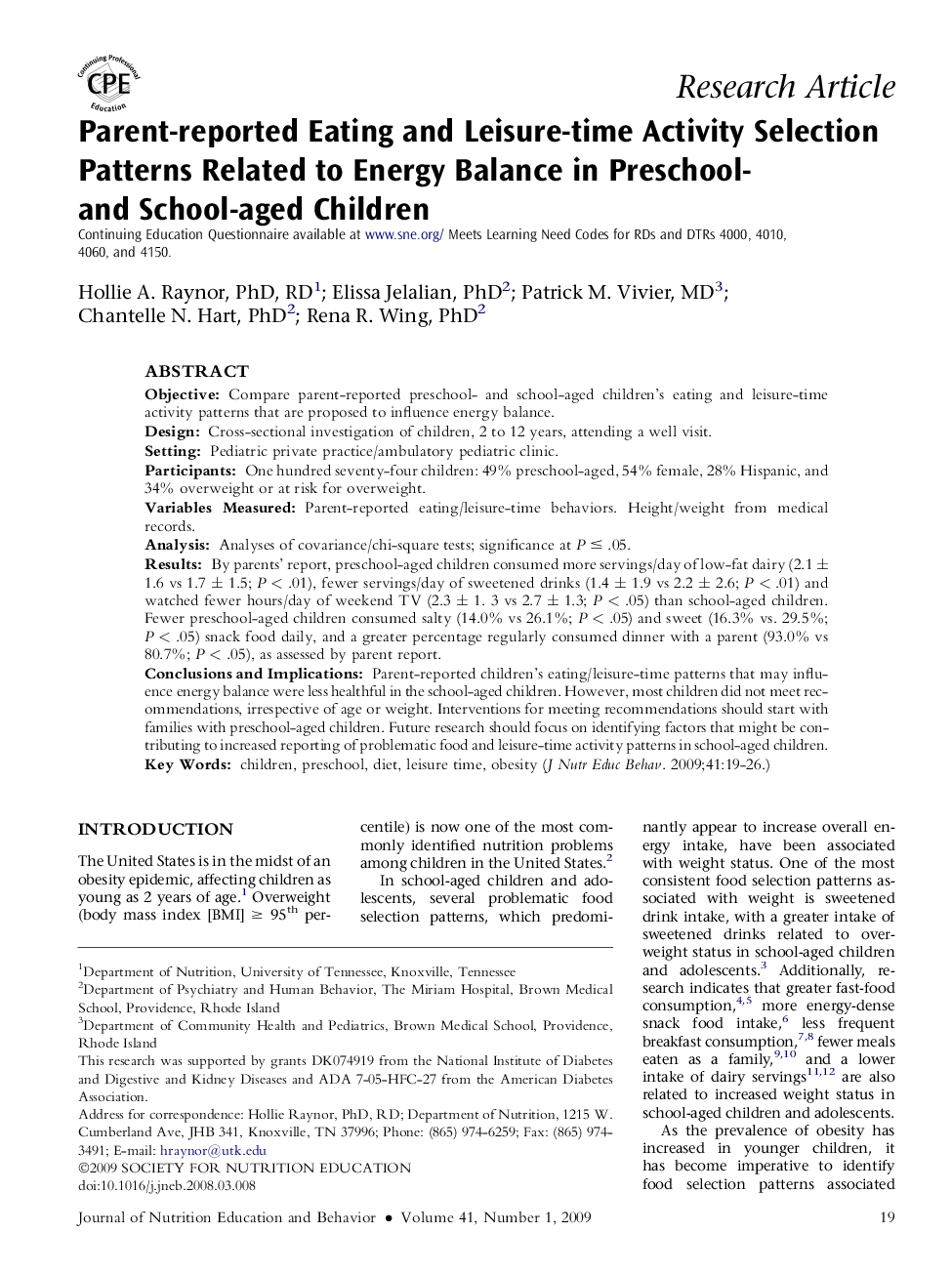| Article ID | Journal | Published Year | Pages | File Type |
|---|---|---|---|---|
| 362721 | Journal of Nutrition Education and Behavior | 2009 | 8 Pages |
ObjectiveCompare parent-reported preschool- and school-aged children's eating and leisure-time activity patterns that are proposed to influence energy balance.DesignCross-sectional investigation of children, 2 to 12 years, attending a well visit.SettingPediatric private practice/ambulatory pediatric clinic.ParticipantsOne hundred seventy-four children: 49% preschool-aged, 54% female, 28% Hispanic, and 34% overweight or at risk for overweight.Variables MeasuredParent-reported eating/leisure-time behaviors. Height/weight from medical records.AnalysisAnalyses of covariance/chi-square tests; significance at P ≤ .05.ResultsBy parents' report, preschool-aged children consumed more servings/day of low-fat dairy (2.1 ± 1.6 vs 1.7 ± 1.5; P < .01), fewer servings/day of sweetened drinks (1.4 ± 1.9 vs 2.2 ± 2.6; P < .01) and watched fewer hours/day of weekend TV (2.3 ± 1. 3 vs 2.7 ± 1.3; P < .05) than school-aged children. Fewer preschool-aged children consumed salty (14.0% vs 26.1%; P < .05) and sweet (16.3% vs. 29.5%; P < .05) snack food daily, and a greater percentage regularly consumed dinner with a parent (93.0% vs 80.7%; P < .05), as assessed by parent report.Conclusions and ImplicationsParent-reported children's eating/leisure-time patterns that may influence energy balance were less healthful in the school-aged children. However, most children did not meet recommendations, irrespective of age or weight. Interventions for meeting recommendations should start with families with preschool-aged children. Future research should focus on identifying factors that might be contributing to increased reporting of problematic food and leisure-time activity patterns in school-aged children.
